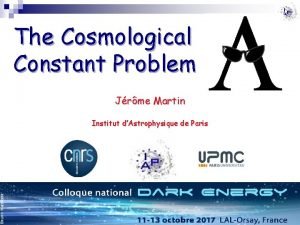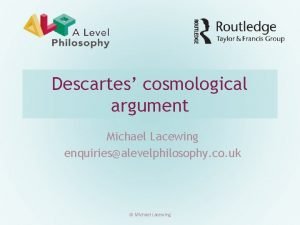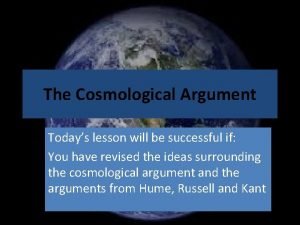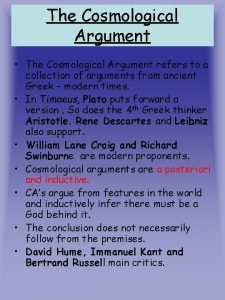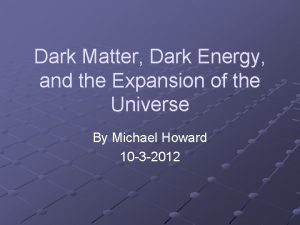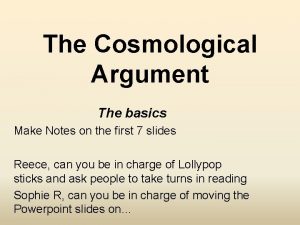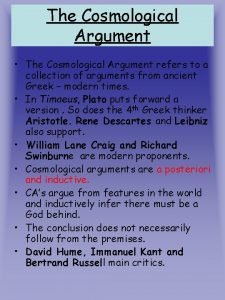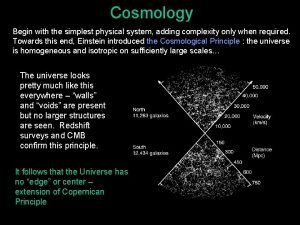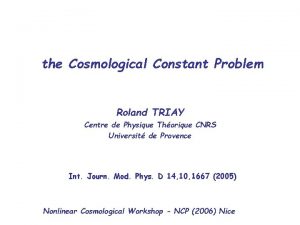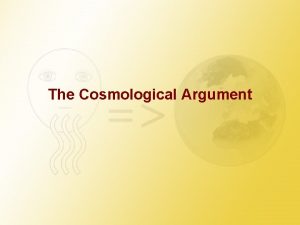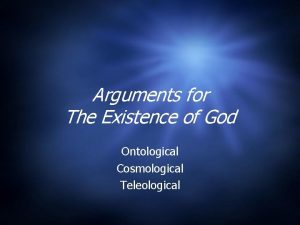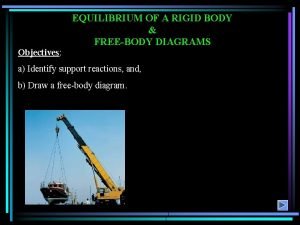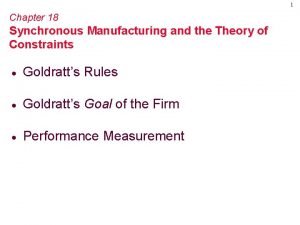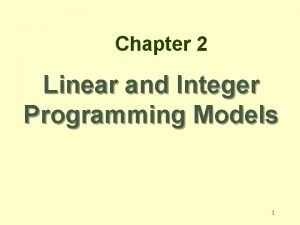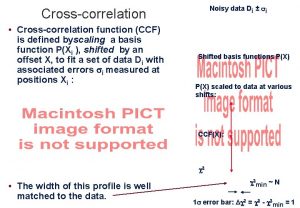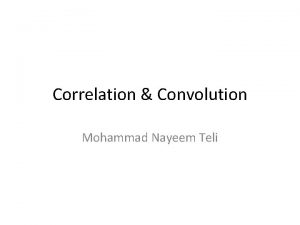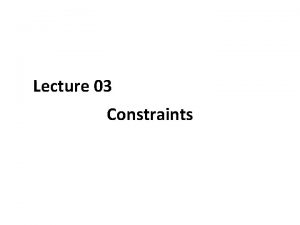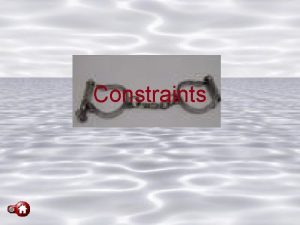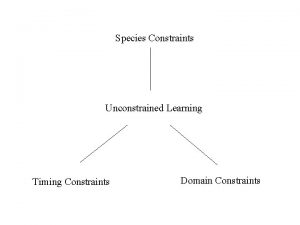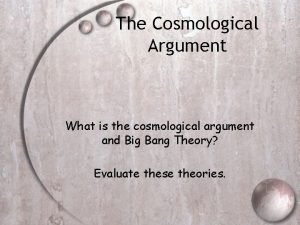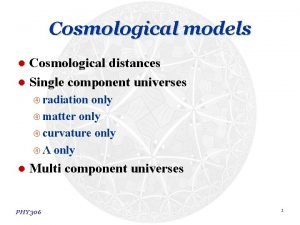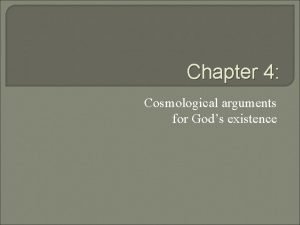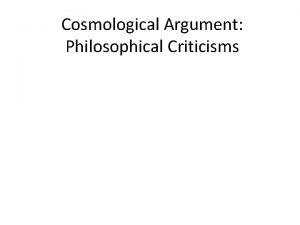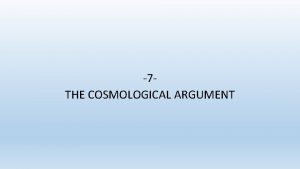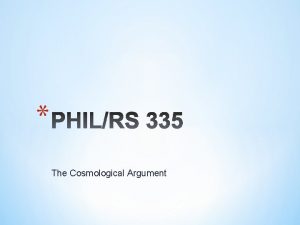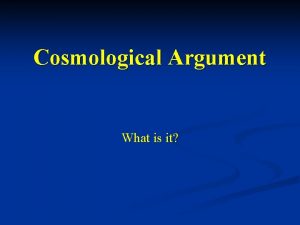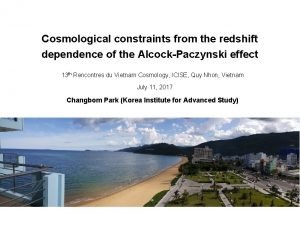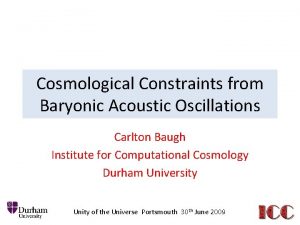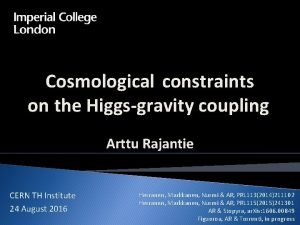Cosmological constraints from t SZX crosscorrelation G Hurier






















- Slides: 22

Cosmological constraints from t. SZ-X cross-correlation G. Hurier

Why ? • X-ray and t. SZ probe matter large scale structure, and thus cosmology • X-ray and t. SZ are produced by the hot intra-cluster medium (13% of the galaxy clusters mass) • Complementarity with X-rays and t. SZ only dedicated analysis • X-ray and t. SZ surveys present different background and foreground contaminations

Introduction : The thermal Sunyaev Zel’dovich effect (t. SZ) The intensity of the t. SZ effect is proportional to the integration of the pressure (Tene) across the line of sight Frequency dependence ΔT = y*f(ν) electron pressure Compton parameter Line of sight Thomson cross section Integrated Compton parameter :

Introduction : The thermal Sunyaev Zel’dovich effect (t. SZ) The intensity of the t. SZ effect is proportional to the integration of the pressure (Tene) across the line of sight Black-body modification (y = 0. 15) Frequency dependence ΔT = y*f(ν) electron pressure Compton parameter Shift of the electromagnetic spectrum Line of sight Thomson cross section Integrated Compton parameter :

Planck : full sky maps

Component separation : MILCA map MILCA : Hurier et al. 2013 : A&A, 558: A 118 Derived from a linear combination of Planck frequency maps

Introduction : Bremsstrahlung electron density This emission is produced by the deceleration of electrons when deflected by acharged particle Electron temperature

ROSAT All Sky Survey (RASS) Low energy band 0. 1 -0. 4 ke. V, dominated by n. H absobtion High energy band 0. 5 -2. 0 ke. V, Less affected by n. H absobtion

How ? • We have now access to both full-sky X-ray and t. SZ surveys: Rosat All Sky Survey Planck t. SZ survey • The cross correlation can be performed on the full-sky using angular power spectrum analysis: already tried with RASS and WMAP (Diego et al. 2003), already done using selected sample of X-ray clusters (Hajian et al. 2013), or using data maps (Hurier et al. 2014 to be submitted)

Modelling the X-SZ cross correlation Hurier et al. 2014 : A&A Cosmology Mater power spectum Mass-Function (Tinker et al. 2008) Linear bias (Kotmatsu & Kitayama 1999) X-SZ t. SZ Ø M 500 - Y 500 scaling law Ø Pressure profile Ø Ø X-ray M 500 - L 500 scaling law M 500 - T 500 scaling law Abundance evolution Density profile

Modelling the t. SZ contribution t. SZ flux prediction: (Planck collaboration XX, XXI 2013) Pressure profile: (Arnaud et al. 2010, Planck Intermediate results V 2013) Fourrier transform of the profile:

Modelling the X-ray contribution Mass-Luminosity relation: (Pratt et al. 2010) Mass-Temperature relation: (Arnaud et al. 2005) Metallicity evolution history: (Andreon 2012) Z= Flux to count rate using Mekal model (Mewe et al. 1985). The n(H) absorption has been accounted for by convolving the flux to count rate conversion factor with the n(H) distribution (LAB survey: Kalberla et al. 2005)

X-SZ power as a function of M 500 and z The SZ-X correlation is dominated by clusters at z < 1 Low mass clusters (M < 1014 Msun) only contribute at small angular scales

Sensitivity to parameters Amplitude variations with cosmology: αH ≈ 2. 38 αΩ ≈ 3. 42 ασ ≈ 8. 12 Shape variation with scaling law :

Data: RASS cross Planck Contents: t. SZ-X AGN CIB-X Hurier et al. 2014 : To be submitted

Data: RASS cross MILCA

RASS cross Known clusters Full cross-spectrum MCXC Planck PSZ 1 2013 Planck 2013 cosmo sample t. SZ-X cross spectrum contains additional informations compared to Planck cosmo sample

MILCA cross Known objects MILCA cross X-ray AGN MILCA cross X-ray galaxy clusters

Limitations of the t. SZ-X correlation From theory Main modelling uncertainties: Mass function uncertainties (about 10%) Scaling laws uncertainties (about 5%) hydrostatic bias (about 10%) Main statistical uncertainties: Instrumental noise CMB contamination Thermal dust contamination From data Main systematics uncertainties: radio loud AGN contamination CIB-X correlation

Constraints per frequency

Combined constraints Planck CMB cosmo Planck SZ cosmo t. SZ-X cross-spectrum Hurier et al. 2014 : To be submitted

THE END
 Nicola.szx
Nicola.szx Hurier model
Hurier model Discriminative listening
Discriminative listening Cosmological constant
Cosmological constant Descartes cosmological argument
Descartes cosmological argument Kant's criticism of cosmological argument
Kant's criticism of cosmological argument St thomas aquinas cosmological argument
St thomas aquinas cosmological argument Einstein cosmological constant
Einstein cosmological constant Contigency argument
Contigency argument St thomas aquinas cosmological argument
St thomas aquinas cosmological argument The universe expanding than
The universe expanding than Roland triay
Roland triay Kalam cosmological argument
Kalam cosmological argument St thomas aquinas cosmological argument
St thomas aquinas cosmological argument Ontological cosmological teleological
Ontological cosmological teleological Constraints design principle
Constraints design principle Constraints and statical determinacy
Constraints and statical determinacy Synchronous manufacturing and theory of constraints
Synchronous manufacturing and theory of constraints Non negativity constraints
Non negativity constraints Quadruple constraints in project management
Quadruple constraints in project management Conversational constraints theory
Conversational constraints theory Biba n 421 ddl
Biba n 421 ddl Accounting constraints
Accounting constraints



